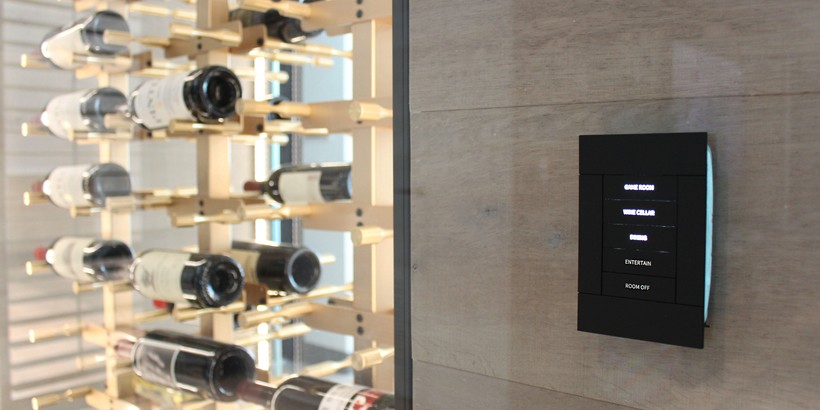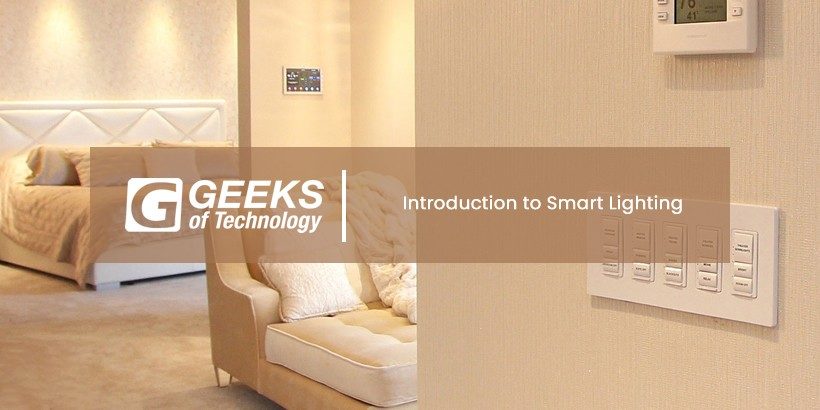Smart lighting, one of the essential elements of every smart home installations. It is the element that brings color and warmth to your home and it always goes hand-in-hand with convenience.
What is Smart Lighting?
Smart Lighting in the most basic and simple terms is lighting that can be controlled from a mobile app (iPhone, iPad, Android device etc). Besides that, smart lighting also means energy efficiency, reliable and fast response and a highly customizable environment.
Smart lighting allows integrators to add features like: light dimmers, multiple point controls, RGB colors or scheduling for a custom behavior.
Smart lighting is also used for security purposes, like blinking a spot when someone is in the sensor’s premises or working alongside a surveillance system.
Centralized vs Wireless Lighting Systems
Smart lighting is split into 2 main categories:
- Centralized Lighting
- Wireless Lighting
Both of them achieve the same functions, but the overall installation process and connectivity are quite different.
For starters, centralized lighting (wired lighting or integrated) stands out by offering a larger variety of controllers and the wiring supports multiple workloads simultaneously.
With that being said, it is obvious to say that it is the more reliable option of the two.
Wireless lighting is great because it is powered by RF (radiofrequency) and that saves you your walls from getting drilled. It also saves you some money, but it is not as powerful as the centralized lighting installation.
Nevertheless, the wireless lighting option is great for those who want a beautiful control system and really don’t want to invest that much into lighting.
Learn more about “Centralized vs Wireless Lighting”.
Energy Efficiency
Smart lighting is not only cool and convenient, it is friendly with the environment as well. This is because most smart lighting systems take advantage of the latest technology trends.
This means that a smart lighting system will come equipped with:
- LED lightbulbs
These are the most energy efficient lightbulbs on the market offering a lifespan of about 50.000 hours which is almost 6 years.
This is incredible compared with a CFL (8000 hours) and an Incandescent lightbulb (1200 hours). Not only this, but an LED lightbulb also consumes way less and brings up more light as well.
LED (4W), CFL (14W) and the classical Incandescent Lightbulb (60W).
- Sensors
The light sensors have a vital role in any smart lighting system. These ensure that you don’t waste light when it is not needed and they help you avoid annoying keypads everywhere. You can set a custom trigger time and you can also pair them with surveillance systems.
- Schedule
Did you know that smart lighting can work on a schedule? Well, it can! This is beneficial for you to save time, energy and even keep burglars away.
Scalability & Custom Use Cases

Smart lighting stands out because of so many ways it can be scaled. In fact, when it comes to this sector, only your imagination is the limit.
Some great examples of smart lighting in action are:
- LED Strips on Gaming TV’s
- Lighting Up a Wine Cellar
- Wall Light Washing
- RGB Lighting for Your Bed
- Get Phone Notifications from Smart Lightbulbs
Do You Want Your Own Smart Lighting Installation?
Geeks of Technology offers complete centralized or wireless smart lighting installations using only the top brands designed for high-end projects. Our team of professionals and consultants is waiting to help you make the right decision for your home.
Give us a call today at (954) 251-0600 or use the Get Started form.

